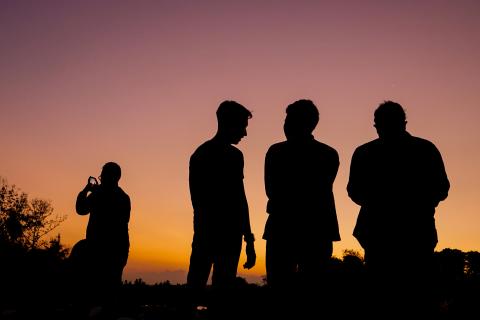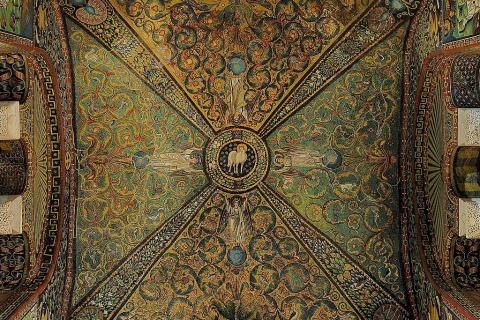
Engineering is an ancient discipline. The term ‘engineer' itself derives from the medieval Latin ingeniator, which in turn derives from in and gignere, meaning literally “one who generates new things.” The term is a cognate with ‘ingenious’ and thereby suggests invention guided by insight. Before considering engineering in its more prescribed sense as a profession or technical discipline, I would first like to consider it in a broader sense, as being both intrinsically fulfilling and part of a general training of the mind – thereby I mean to consider engineering as a liberal art. While this may seem an odd reflection upon a practical discipline, it may be essential to avoiding certain pathological pitfalls (both for the individual and society at large).
The start of the twentieth century was marked by technological advancement and World War I. For those who experienced it – including J.R.R. Tolkien, famed author and scholar – industrialization and the mechanization of the battlefield was an immediate cause of the desolation of the countryside and the brutality of the fighting. In spite of this, it would be wrong to infer that Tolkien was a luddite or was especially critical of technology per se. Military technology was but one medium through which imperial and nationalistic aspirations were expressed, and Tolkien understood this.
Nonetheless, allusions to technology accompany criticism of antagonists in Tolkien’s The Lord of the Rings, and it is of interest here to consider why. In a specific instance, Treebeard says of Saruman, “He is plotting to become a Power. He has a mind of metal and wheels; and he does not care for growing things, except as far as they serve him for the moment.” In this formulation, we see that Saruman’s will to power and disinterest in “growing things,” except as expendable tools, are also themes that accompany the critique of his preoccupation with metal and wheels. Metal and wheels are thus representative of Saruman’s desire to instrumentalize and dominate the things around him. Metal and wheels are more conducive to Saruman’s purpose because they are conceived as lacking intrinsic natures of their own. Thus, in Saruman we see that a hazard of technological pursuits is that they can represent a disordered desire for power.
In addition to prayer and study, manual labor was also included in monasticism’s daily routines. This integration arose not only from necessity, but also because it was understood that labor was felicitous for the soul and was the example set by the apostles and church fathers.
In some respect, technology has an inherent relationship to power. Technology extends the realm of possibility, which is always in some way the purpose of those who create and use it: this seems to be a proper part of the appeal of technological pursuits and the romance of invention. Technical pursuits are an expression of human striving and vision. Nevertheless, technological advancements, which are generally boons to society, may have a variety of effects. This can be seen in industrialization, which has led to material flourishing but has also often been the occasion of abuse of dispossessed peoples (such as those who experienced English land enclosures) and has led to a concerning production of greenhouse gases. In a similar way, the internet has led to unprecedented connectivity and access to information but has also affected our political processes. More generally, while good design may be a blessing, bad design can be disastrous.
With the significant effects that technology has had on our lives and an ever-increasing popularity of related fields, such as engineering, it is appropriate to reflect on the ultimate goal of education in technical disciplines. It seems the kind of person such programs should seek to generate is neither a mere functionary nor a self-indulgent technocrat, but rather is simultaneously a potent innovator and a genuine servant. The need for this melding of traits might be represented by the classical dichotomy of the servile and liberal arts. In the ancient world, the servile arts were pursued for the sake of a particular trade and came to be viewed as the preoccupation of a servant. The liberal arts were pursued for a more general training of the mind and were pursued by free citizens who composed the ruling bodies of society.
Training in a particular hands-on trade was shunned by the elite of late antiquity because such an education was perceived to be beneath their dignity. Christianity gave renewed dignity to humbler work and stations due to Christ’s emphasis on service and identification with the poor. Benedictine monasticism especially integrated labor into its spirituality: the motto "ora et labora"(prayer and work) represented the essential balance of monastic life. In addition to prayer and study, manual labor was also included in monasticism’s daily routines. This integration arose not only from necessity, but also because it was understood that labor was felicitous for the soul and was the example set by the apostles and church fathers.
In addition to being focused on manual labor, however, Benedictine monks were also well educated. Much of the literature of the ancient world was preserved in Benedictine monasteries and much of the nobility were educated by Benedictine monks. Monasteries developed into rigorous academic centers that later gave rise to medieval universities. Benedictine monks were brewers, farmers, and shepherds, but they were also jurists, philosophers, and theologians. Out of necessity, innovations were born of the Benedictine way of life: for instance, the Cistercians (who most heavily emphasized labor and self-sufficiency) became skilled metallurgists and architects and were early adapters of the water wheel. Thus, Benedictine monasticism combined experience of study and practical labors.
To the question of the desired goal of education in technical disciplines, Benedictine monasticism can serve as something of an image. Students should be broadly educated and inspired but also grounded, intimately connected with the realities of life for those around them: these are the traits necessary for a new engineer to be both a potent innovator and a genuine servant. Programs of study guided by such a vision will not merely produce better engineers, but better students and better people, as well.


